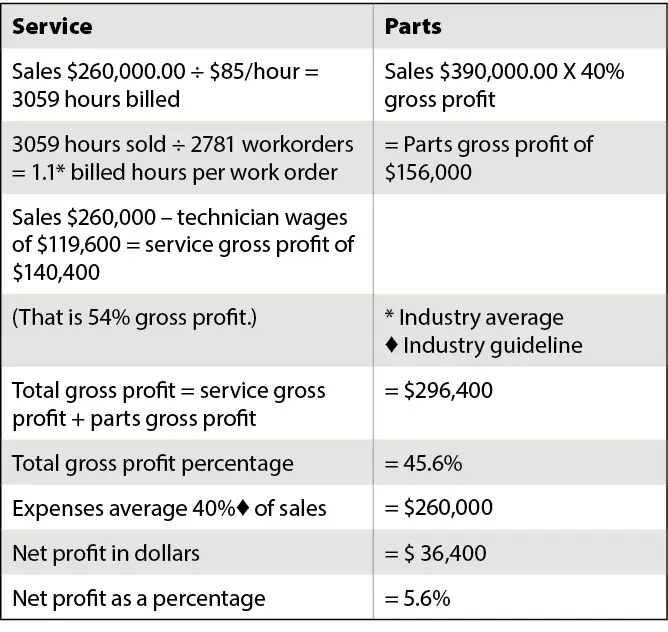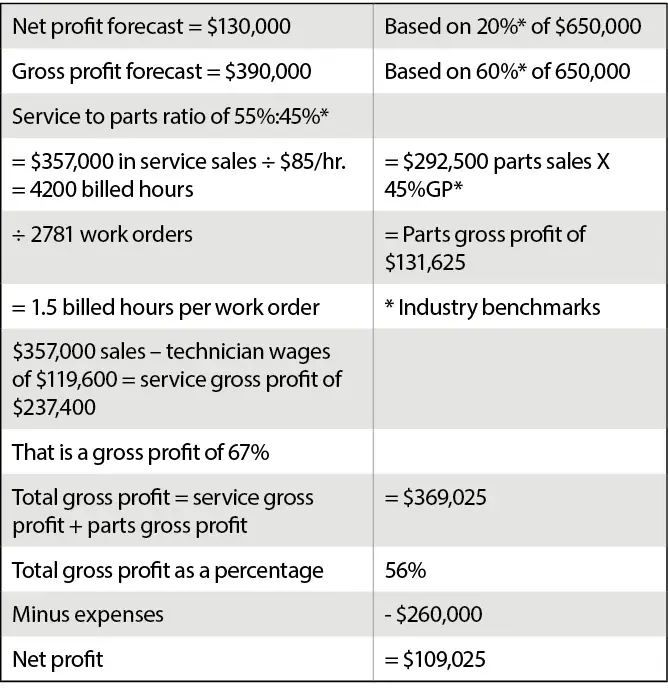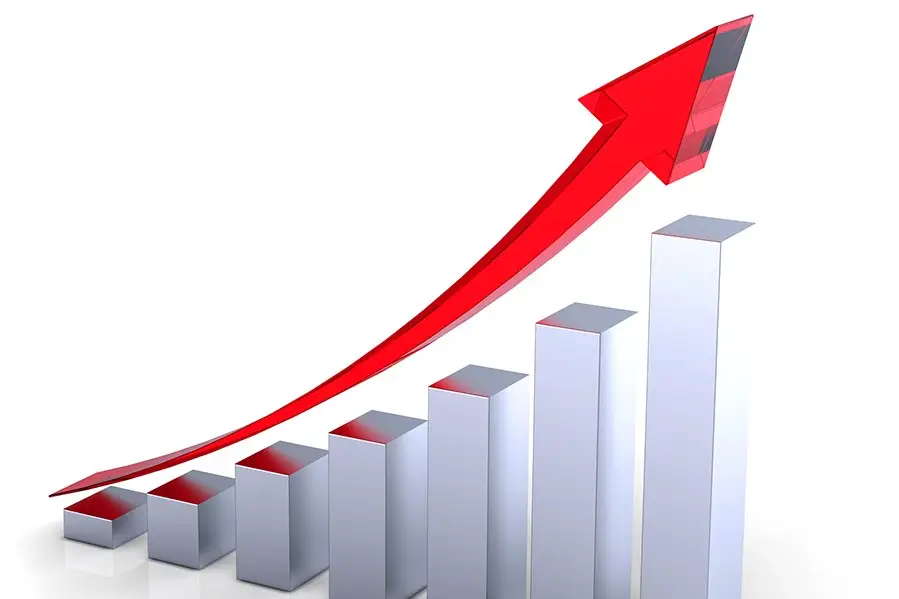Achieve what you deserve—choose the net profit you require and work backwards. Stop looking for the silver bullet and chip away at all the small things that make a big profit.
Based on the Automotive Industries Association of Canada’s 2020 Outlook Study, the average independent automotive service provider has a net profit of between 6.3% and 8.8 % a year. An example of a shop with $650,000 dollars in annual sales will net between $40,950 and $57,200. This takes place with the shop owner spending at least 25% of his/her time in the bays, and usually drawing out a below average salary for the amount of time they spend in the business.
As with many other small businesses in Canada, ladies and gentlemen, you have just bought yourselves a job. One of the reasons this does not stress you out more is because as a small business, you also benefit from the fact that you can use the business to buy yourself some of the perks of life and expense them to the business. So you may have a snowmobile, or take the odd trip on the company dime, but you are taking cash flow from the business that could otherwise keep it growing. (Please note that this is an observation. I do not condone “creative” accounting practices. I always say that what you do is between you, your accountant, and God.)
The industry benchmark for net profit is 20% of sales. The same shop with $650,000 in annual sales should have a net profit of $130,000. Another conversation I rarely hear in this industry is the rate of return that an independent automotive service provider is getting on their investment.
Take the time to add up all of your assets, tools, equipment, inventory, land, and buildings. What is your rate of return on all of the money that you have invested in your business? If you have net assets of $500,000, are you getting a 10% return on your investment? That would be $50,000. I am told that with a good financial advisor, you can make that just by putting your money in the right place. Why would you work as hard as you do for just a 10% return?
One thing I can say for sure is that people in our industry work very hard and offer a lot of value to the consumer. They are also intelligent and diligent. So why are things not better than they are? I believe that this is due to a lack of knowledge that helps us see things differently, and business practices that reflect this lack of knowledge.
Most budgeting practices that I have been a part of in the past focus on sales and expenses. The questions that are asked include, “How much are we going to increase our sales this year,” or “How much can we reduce our expenses this year?” At best, this is a dart throw because there is usually not much science or math around the resulting decision. Let me propose a different model. Choose your net profit required and work backwards; this is called “bottom-up forecasting.”
Let us use the example of a shop with $650,000 in sales. If we use a service-to-parts mix of 40% service and 60% parts, this shop will have annual service sales of $260,000 and parts sales of $390,000. Let’s put this into a table. This example is based on dozens of shops that I have had the privilege of working with.

The above table maps out the current condition of a lot of shops prior to receiving management training and coaching. The table below is an example of budgeting for net profit.

As you can see, we are short about $21,000 in net profit based on our forecast, but you can also see that we tripled our previous net profit. The remaining net profit required will easily be attained if you understand the following:
Did you see the growth of average billed hours per work order from 1.1 to 1.5? Can you imagine that only .4 billed hours per work order would give you that net profit? Where does this .4 billed hours come from? How about charging for brake inspections and coolant leak diagnosis? Do you charge for all your diagnosis? What about opportunities like fluid flushes and exchanges? Or adopt a great idea that one shop had and create a spare tire and storage mechanism service. Take out the spare tire and check the inflation and service the cable and crank system, all for .5 of an hour of service.
When was the last time you saw someone stranded at the side of the road because they could not get their spare down and wondered if it was one of your customers? When you perform and charge for many of these valuable services, additional parts and fluids will also be sold, and that additional profit will make up the missing $21,000 in our exercise.
The average independent automotive shop is only 54% productive. That means management is only keeping technicians working on cars 54% of the time, or billing for only 54% of the work if the technicians are actually working on cars 100% of the time. It is a combination of these factors that keep you from the net profit you deserve. I hope you understand that I am not picking on the technicians. As an industry we ask them to do a lot of things that are not really in their job description, and we give away a lot of their labour.
My challenge to you is to look for those labour leaks, plug them, and identify the labour opportunities that will bring you the gross and net profits you deserve. Is this hard work? Yes, but it is meaningful work. Stop looking for the silver bullet and chip away at all the small things that make a big profit.
RPM Training offers a special discount on training courses for ARA members. Visit the ARA’s Preferred Supplier website to take advantage of this offer.

